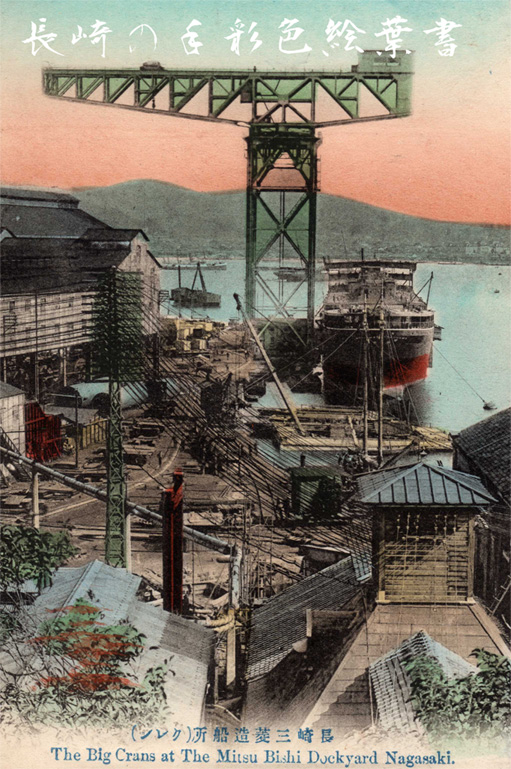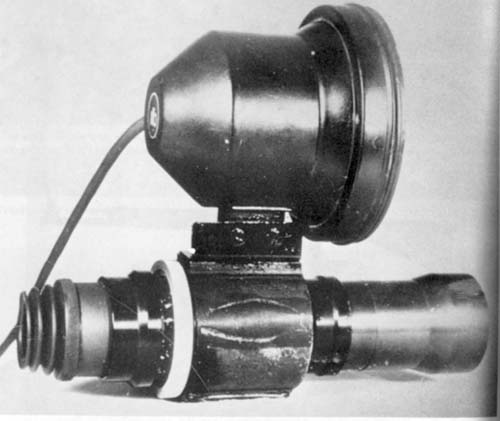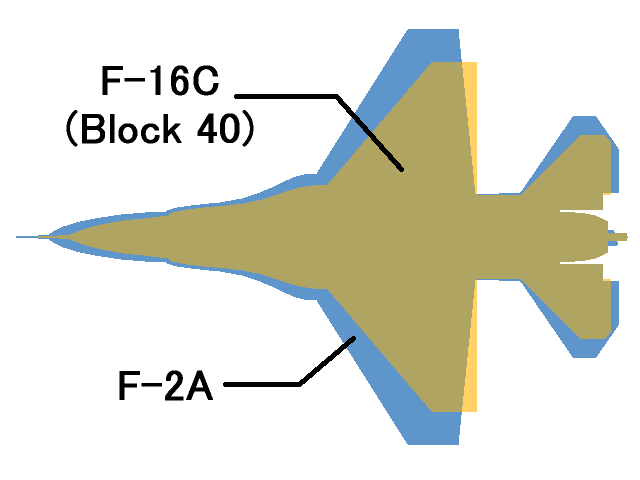|
Type 93 Air-to-Ship Missile
The Type 93 Air-to-Ship Missile (93式空対艦誘導弾, ASM-2) is an air-to-ship missile developed in Japan. This missile is used by the Japan Air Self-Defense Force. The ASM-2 will be replaced by the ASM-3. See also * Type 80 Air-to-Ship Missile * Type 88 Surface-to-Ship Missile * Type 90 Ship-to-Ship Missile * ASM-3 The ASM-3 is a supersonic anti-ship missile being developed by Mitsubishi Heavy Industries to replace the ASM-1 and ASM-2 missiles. The major launch platform is the Mitsubishi F-2. Planned Initial Operational Capability was 2016. The missile w ... Anti-ship missiles of Japan Anti-ship cruise missiles Military equipment introduced in the 1990s {{Missile-stub ... [...More Info...] [...Related Items...] OR: [Wikipedia] [Google] [Baidu] |
Mitsubishi Heavy Industries
is a Japanese multinational engineering, electrical equipment and electronics corporation headquartered in Tokyo, Japan. MHI is one of the core companies of the Mitsubishi Group and its automobile division is the predecessor of Mitsubishi Motors. MHI's products include aerospace and automotive components, air conditioners, elevators, forklift trucks, hydraulic equipment, printing machines, missiles, tanks, power systems, ships, aircraft, railway systems, and space launch vehicles. Through its defense-related activities, it is the world's 23rd-largest defense contractor measured by 2011 defense revenues and the largest based in Japan. History In 1857, at the request of the Tokugawa Shogunate, a group of Dutch engineers were invited, including Dutch naval engineer Hendrik Hardes, and began work on the ''Nagasaki Yotetsusho'' 長崎鎔鉄所 , a modern, Western-style foundry and shipyard near the Dutch settlement of Dejima, at Nagasaki. This was renamed ''Naga ... [...More Info...] [...Related Items...] OR: [Wikipedia] [Google] [Baidu] |
Turbojet
The turbojet is an airbreathing jet engine which is typically used in aircraft. It consists of a gas turbine with a propelling nozzle. The gas turbine has an air inlet which includes inlet guide vanes, a compressor, a combustion chamber, and a turbine (that drives the compressor). The compressed air from the compressor is heated by burning fuel in the combustion chamber and then allowed to expand through the turbine. The turbine exhaust is then expanded in the propelling nozzle where it is accelerated to high speed to provide thrust. Two engineers, Frank Whittle in the United Kingdom and Hans von Ohain in Germany, developed the concept independently into practical engines during the late 1930s. Turbojets have poor efficiency at low vehicle speeds, which limits their usefulness in vehicles other than aircraft. Turbojet engines have been used in isolated cases to power vehicles other than aircraft, typically for attempts on land speed records. Where vehicles are "turbine-powere ... [...More Info...] [...Related Items...] OR: [Wikipedia] [Google] [Baidu] |
Inertial Guidance
An inertial navigation system (INS) is a navigation device that uses motion sensors (accelerometers), rotation sensors ( gyroscopes) and a computer to continuously calculate by dead reckoning the position, the orientation, and the velocity (direction and speed of movement) of a moving object without the need for external references. Often the inertial sensors are supplemented by a barometric altimeter and sometimes by magnetic sensors ( magnetometers) and/or speed measuring devices. INSs are used on mobile robots and on vehicles such as ships, aircraft, submarines, guided missiles, and spacecraft. Other terms used to refer to inertial navigation systems or closely related devices include inertial guidance system, inertial instrument, inertial measurement unit (IMU) and many other variations. Older INS systems generally used an inertial platform as their mounting point to the vehicle and the terms are sometimes considered synonymous. Overview Inertial navigation is a self-cont ... [...More Info...] [...Related Items...] OR: [Wikipedia] [Google] [Baidu] |
Infrared Homing
Infrared homing is a passive weapon guidance system which uses the infrared (IR) light emission from a target to track and follow it seamlessly. Missiles which use infrared seeking are often referred to as "heat-seekers" since infrared is radiated strongly by hot bodies. Many objects such as people, vehicle engines and aircraft generate and emit heat and so are especially visible in the infrared wavelengths of light compared to objects in the background. Infrared seekers are passive devices, which, unlike radar, provide no indication that they are tracking a target. That makes them suitable for sneak attacks during visual encounters or over longer ranges when they are used with a forward looking infrared or similar cuing system. Heat-seekers are extremely effective: 90% of all United States air combat losses over the past 25 years have been caused by infrared-homing missiles. They are, however, subject to a number of simple countermeasures, most notably by dropping flares beh ... [...More Info...] [...Related Items...] OR: [Wikipedia] [Google] [Baidu] |
Mitsubishi F-2
The Mitsubishi F-2 is a multirole fighter derived from the General Dynamics F-16 Fighting Falcon, and manufactured by Mitsubishi Heavy Industries and Lockheed Martin for the Japan Air Self-Defense Force, with a 60/40 split in manufacturing between Japan and the United States. The basis of the F-2's design is the F-16 Agile Falcon, an unsuccessful offer by General Dynamics to provide a low-cost alternative for the Advanced Tactical Fighter (ATF) competition. Production started in 1996 and the first aircraft entered service in 2000. The first 76 aircraft entered service by 2008, with a total of 98 airframes produced. The first active electronically scanned array (AESA) radar on a combat aircraft was the J/APG-1 introduced on the Mitsubishi F-2 in 1995. The F-2 is nicknamed "Viper Zero", a reference to the F-16's unofficial nickname of "Viper" and the Mitsubishi A6M Zero. Development US–Japan negotiations The JASDF and its contractors considered developing a Japanese-designed, J ... [...More Info...] [...Related Items...] OR: [Wikipedia] [Google] [Baidu] |
F-4 Phantom II
The McDonnell Douglas F-4 Phantom II is an American tandem two-seat, twin-engine, all-weather, long-range supersonic jet interceptor and fighter-bomber originally developed by McDonnell Aircraft for the United States Navy.Swanborough and Bowers 1976, p. 301. Proving highly adaptable, it entered service with the Navy in 1961 before it was adopted by the United States Marine Corps and the United States Air Force, and by the mid-1960s it had become a major part of their air arms. Phantom production ran from 1958 to 1981 with a total of 5,195 aircraft built, making it the most produced American supersonic military aircraft in history, and cementing its position as an iconic combat aircraft of the Cold War."F-4 Phantoms Phabulous 40th" Boeing. Retrieved : 27 November 2012. [...More Info...] [...Related Items...] OR: [Wikipedia] [Google] [Baidu] |
Anti-ship Missile
An anti-ship missile (AShM) is a guided missile that is designed for use against ships and large boats. Most anti-ship missiles are of the sea skimming variety, and many use a combination of inertial guidance and active radar homing. A good number of other anti-ship missiles use infrared homing to follow the heat that is emitted by a ship; it is also possible for anti-ship missiles to be guided by radio command all the way. The first anti-ship missiles, which were developed and built by Nazi Germany, used radio command guidance.https://airandspace.si.edu/collection-objects/bomb-guided-fritz-x-x-1/nasm_A19840794000#:~:text=The%20Fritz%20X%2C%20also%20known,the%20Henschel%20Hs%20293%20missile. These saw some success in the Mediterranean Theatre during 1943–44, sinking or heavily damaging at least 31 ships with the Henschel Hs 293 and more than seven with the ''Fritz X'', including the Italian battleship ''Roma'' and the light cruiser . A variant of the HS 293 had a TV ca ... [...More Info...] [...Related Items...] OR: [Wikipedia] [Google] [Baidu] |
Japan Air Self-Defense Force
The , , also informally referred to as the Japanese Air Force, is the air and space branch of the Japan Self-Defense Forces, responsible for the defense of Japanese airspace, other air and space operations, cyberwarfare and electronic warfare. The JASDF carries out combat air patrols around Japan, while also maintaining a network of ground and air early-warning radar systems. The branch also has an aerobatic team known as Blue Impulse and has provided air transport in UN peacekeeping missions. The JASDF had an estimated 49,913 personnel as of 2018, and as of 2020 operates about 740 aircraft, approximately 330 of them being fighter aircraft. As of 2020, the JASDF is under increasing pressure to intercept warplanes from China's People's Liberation Army Air Force (PLAAF) close to entering its air space. As of the last fiscal year ending in March 2020, the JASDF scrambled a record 947 times alone against PLAAF warplanes, putting heavy wear and tear on the F-15J. As of 2021 ... [...More Info...] [...Related Items...] OR: [Wikipedia] [Google] [Baidu] |
ASM-3
The ASM-3 is a supersonic anti-ship missile being developed by Mitsubishi Heavy Industries to replace the ASM-1 and ASM-2 missiles. The major launch platform is the Mitsubishi F-2. Planned Initial Operational Capability was 2016. The missile will be used by the Japan Air Self-Defense Force. It can attack not only ships, but also ground targets. Since the original model of ASM3 had a short range of 200 km, it was not deployed immediately, and an improved model was developed from 2017 to 2020, and deployment of (ASM3a) with a range of about 300~400 km started in 2021. In the future, it may also have a range of 400 km or more. In November 2015, Japan's Ministry of Defense announced it would conduct a live-fire experiment of the XASM-3 in 2016, targeting the decommissioned ship JDS Shirane. In February 2017, an F-2 carried out a jettison test of the missile as a precursor to a live firing. Mass production was planned to begin in 2018 but stopped due to the further upgrade progr ... [...More Info...] [...Related Items...] OR: [Wikipedia] [Google] [Baidu] |
Type 80 Air-to-Ship Missile
Type 80 Air-to-Ship Missile (80式空対艦誘導弾, ASM-1) is an air-launched anti-ship missile developed by Mitsubishi Heavy Industries. It entered service with the Japan Air Self-Defense Force in 1980. The major launch platforms for the Type 80 are the Mitsubishi F-1, JASDF F-4EJ ''Kai'' and Mitsubishi F-2. The missile is primarily intended as an air-launched coastal defence weapon. In fact it is somewhat more capable than this, able to engage both sea and land targets such as buildings and bridges. The Type 80 also serves as the basis of several other weapons; it forms part of the ground-launched SSM-1 system and was also developed into the Type 88 SSM (Surface-to-Ship Missile), the Type 90 SSM (Ship-to-Ship Missile), and the 91 and 93 ASMs (Air-to-Ship Missile). The ASM-1 will be replaced by the ASM-3 currently in development. See also * Type 88 Surface-to-Ship Missile * Type 90 Ship-to-Ship Missile The Type 90 Ship-to-Ship Missile (90式艦対艦誘導弾, SSM ... [...More Info...] [...Related Items...] OR: [Wikipedia] [Google] [Baidu] |
Missile Designation
In 1963, the United States Department of Defense, U.S. Department of Defense established a designation system for rockets and guided missiles jointly used by all the United States armed services. It superseded the separate designation systems the Air Force and Navy had for designating US guided missiles and drones, but also a short-lived interim USAF system for guided missiles and rockets. History On 11 December 1962, the U.S. Department of Defense issued Directive 4000.20 “Designating, Redesignating, and Naming Military Rockets and Guided Missiles” which called for a joint designation system for rockets and missiles which was to be used by all armed forces services. The directive was implemented via Air Force Regulation (AFR) 66-20, Army Regulation (AR) 705-36, Bureau of Weapons Instruction (BUWEPSINST) 8800.2 on 27 June 1963. A subsequent directive, DoD Directive 4120.15 "Designating and Naming Military Aircraft, Rockets, and Guided Missiles", was issued on 24 November 1971 an ... [...More Info...] [...Related Items...] OR: [Wikipedia] [Google] [Baidu] |
Type 88 Surface-to-Ship Missile
The Type 88 Surface-to-Ship Missile (88式地対艦誘導弾, SSM-1) is a truck-mounted anti-ship missile developed by Japan's Mitsubishi Heavy Industries in the late 1980s. It is a land-based version of the air-launched Type 80 (ASM-1) missile; in turn it was developed into the ship-launched Type 90 (SSM-1B) missile. The Japan Ground Self-Defense Force bought 54 transporter erector launchers, each carrying six Type 88 missiles, for use as coastal batteries. With a range of , high subsonic speed and warhead, it is similar to the US Harpoon missile. In 2015, an upgrade of the Type 88 became operational called the Type 12. The Type 12 features INS with mid-course GPS guidance and better precision due to enhanced TERCOM and target discrimination capabilities. The weapon is networked, where initial and mid-course targeting can be provided by other platforms, and also boasts shorter reload times, reduced lifecycle costs, and a range of . [...More Info...] [...Related Items...] OR: [Wikipedia] [Google] [Baidu] |






.jpg)